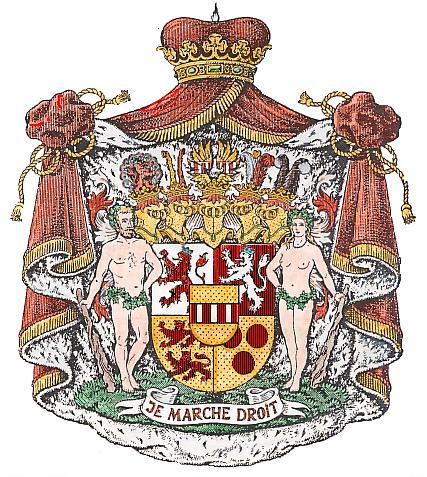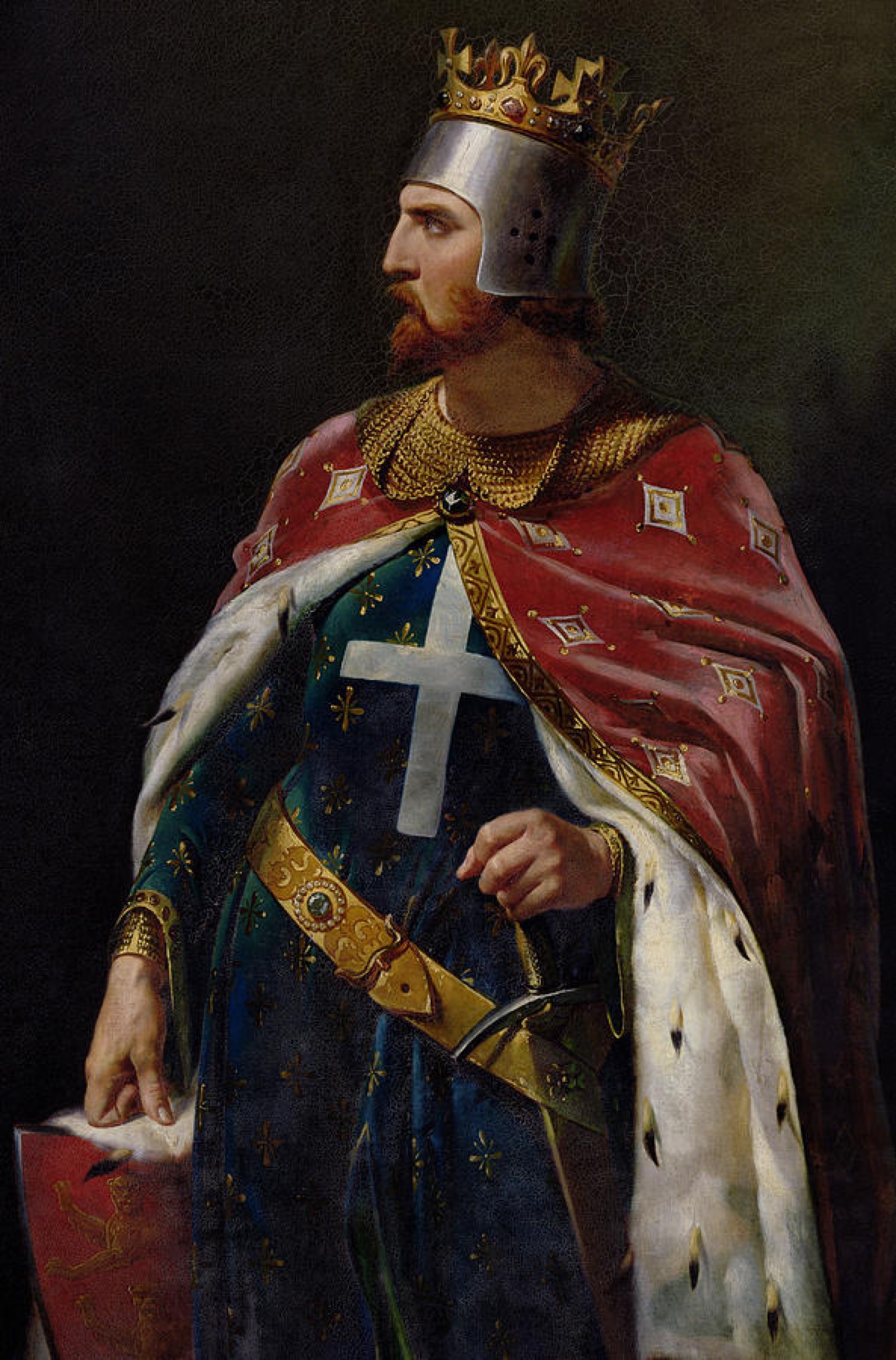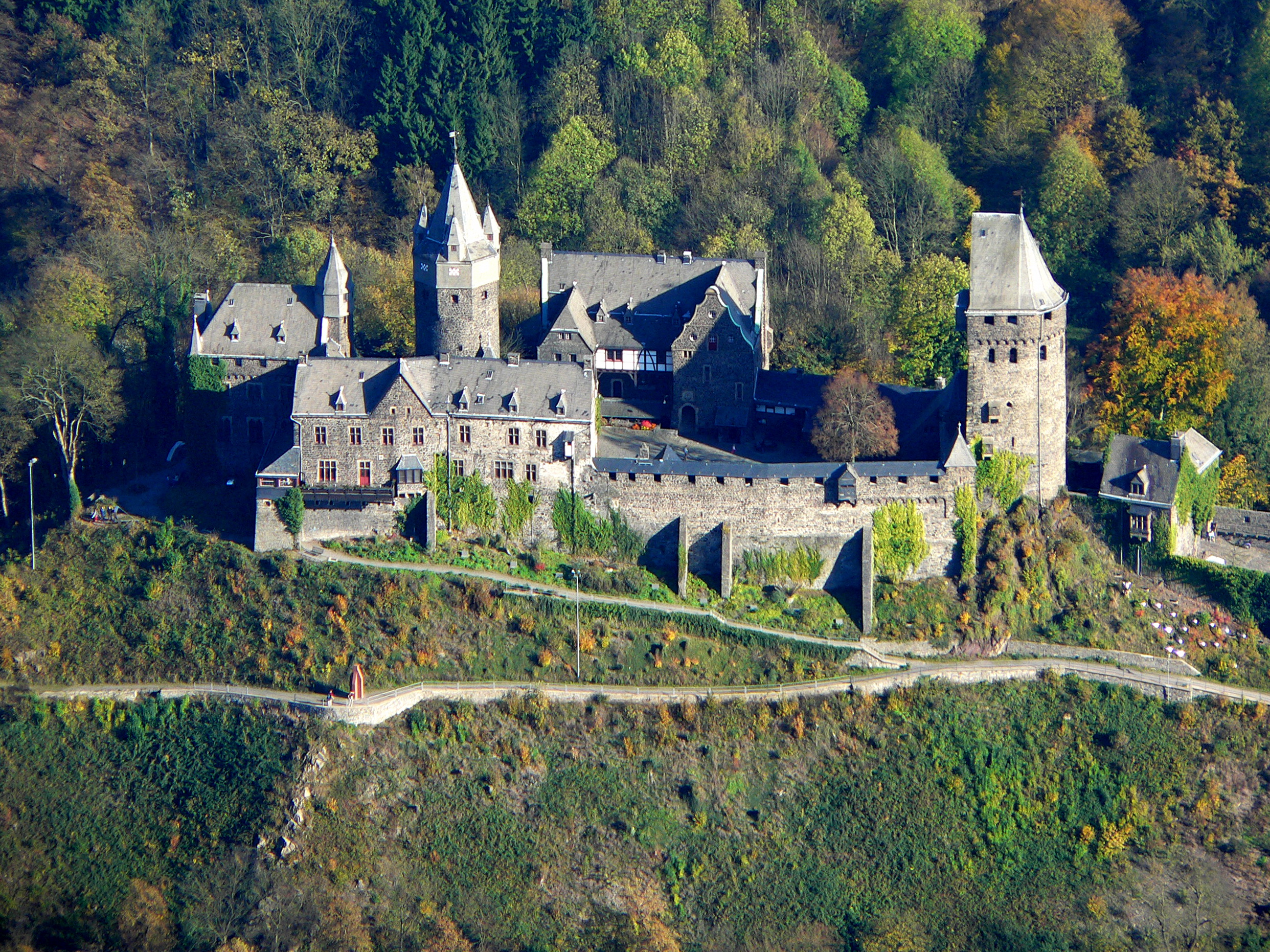|
Engelbert I Of Berg (count)
Count Engelbert I of Berg (d. July 1189 in Serbia) ruled the County of Berg from 1160 to 1189. He was the son of Adolf IV of Berg. Through his loyalty to the German Emperor and the Archbishops of Cologne he succeeded in stabilising the county and increasing its revenues. He took Bensberg Palace, Neu-Windeck and Elberfeld. In July 1189 he was killed near Kovin, in Serbia, while on his way to the Holy Land with the crusade of emperor Frederick Barbarossa. He married Margaret of Geldern (born 1157, died 1190?) and his sons were: * Count Adolf VI of Berg (d. 1218) and * Count Engelbert II of Berg Count Engelbert II of Berg, also known as Saint Engelbert, Engelbert of Cologne, Engelbert I, Archbishop of Cologne or Engelbert I of Berg, Archbishop of Cologne (1185 or 1186, Schloss Burg – 7 November 1225, Gevelsberg) was archbishop of C ... (d. 7 November 1225), otherwise known as Engelbert I, Archbishop of Cologne and as Saint Engelbert. Literature *Alberic of Troisfontai ... [...More Info...] [...Related Items...] OR: [Wikipedia] [Google] [Baidu] |
Serbia
Serbia (, ; Serbian language, Serbian: , , ), officially the Republic of Serbia (Serbian language, Serbian: , , ), is a landlocked country in Southeast Europe, Southeastern and Central Europe, situated at the crossroads of the Pannonian Basin and the Balkans. It shares land borders with Hungary to the north, Romania to the northeast, Bulgaria to the southeast, North Macedonia to the south, Croatia and Bosnia and Herzegovina to the west, and Montenegro to the southwest, and claims a border with Albania through the Political status of Kosovo, disputed territory of Kosovo. Serbia without Kosovo has about 6.7 million inhabitants, about 8.4 million if Kosvo is included. Its capital Belgrade is also the List of cities in Serbia, largest city. Continuously inhabited since the Paleolithic Age, the territory of modern-day Serbia faced Slavs#Migrations, Slavic migrations in the 6th century, establishing several regional Principality of Serbia (early medieval), states in the early Mid ... [...More Info...] [...Related Items...] OR: [Wikipedia] [Google] [Baidu] |
Frederick Barbarossa
Frederick Barbarossa (December 1122 – 10 June 1190), also known as Frederick I (german: link=no, Friedrich I, it, Federico I), was the Holy Roman Emperor from 1155 until his death 35 years later. He was elected King of Germany in Frankfurt on 4 March 1152 and crowned in Aachen on 9 March 1152. He was crowned King of Italy on 24 April 1155 in Pavia and emperor by Pope Adrian IV on 18 June 1155 in Rome. Two years later, the term ' ("holy") first appeared in a document in connection with his empire. He was later formally crowned King of Burgundy, at Arles on 30 June 1178. He was named by the northern Italian cities which he attempted to rule: Barbarossa means "red beard" in Italian; in German, he was known as ', which means "Emperor Redbeard" in English. The prevalence of the Italian nickname, even in later German usage, reflects the centrality of the Italian campaigns to his career. Frederick was by inheritance Duke of Swabia (1147–1152, as Frederick III) before his i ... [...More Info...] [...Related Items...] OR: [Wikipedia] [Google] [Baidu] |
House Of Limburg-Stirum
The House of Limburg-Stirum (or Limburg-Styrum), which adopted its name in the 12th century from the immediate county of Limburg an der Lenne in what is now Germany, is one of the oldest families in Europe. It is the eldest and only surviving branch of the House of Berg, which was among the most powerful dynasties in the region of the lower Rhine during the Middle Ages. Some historians link them to an even older dynasty, the Ezzonen, going back to the 9th century. The Limburg-Stirum were imperial counts within the Holy Roman Empire, until they were mediatised in 1806 by the Confederation of the Rhine. Although undisputedly a mediatised comital family, having enjoyed a dynastic status for over 600 years until the collapse of the Empire, they were omitted from the ''Almanach de Gotha'' because the branches of the family possessing mediatised lands were extinct by the time (1815) that the Congress of Vienna established the German Confederation's obligation to recognise their dynas ... [...More Info...] [...Related Items...] OR: [Wikipedia] [Google] [Baidu] |
Counts Of Berg
Berg was a state—originally a county, later a duchy—in the Rhineland of Germany. Its capital was Düsseldorf. It existed as a distinct political entity from the early 12th to the 19th centuries. The name of the county lives on in the modern geographic term Bergisches Land, often misunderstood as ''bergiges Land'' (hilly country). History Ascent The Counts of Berg emerged in 1101 as a junior line of the dynasty of the Ezzonen, which traced its roots back to the 9th-century Kingdom of Lotharingia, and in the 11th century became the most powerful dynasty in the region of the lower Rhine. In 1160, the territory split into two portions, one of them later becoming the County of the Mark, which returned to the possession of the family line in the 16th century. The most powerful of the early rulers of Berg, Engelbert II of Berg died in an assassination on November 7, 1225. In 1280 the counts moved their court from Schloss Burg on the Wupper river to the town of Düsseldorf. Coun ... [...More Info...] [...Related Items...] OR: [Wikipedia] [Google] [Baidu] |
1189 Deaths
Year 1189 ( MCLXXXIX) was a common year starting on Sunday (link will display the full calendar) of the Julian calendar. In English law, 1189 - specifically the beginning of the reign of Richard I - is considered the end of time immemorial. Events By place Europe * May 11 – Emperor Frederick I (Barbarossa) sets out from Regensburg, at the head of a German expeditionary force (some 15,000 men, including 4,000 knights). He has ensured that his lands are safe while he is away on crusade and leaves his son Henry VI in charge of the country. After leaving Germany, Frederick's army is increased by a contingent of 2,000 men led by Prince Géza, younger brother of King Béla III of Hungary. On July 27, he arrives at Niš and is welcomed by Stefan Nemanja, Grand Prince of Serbia. In order to ease his passage, Frederick makes diplomatic contacts with Hungary, the Byzantine Empire and the Seljuk Sultanate of Rum. * July 6 – King Henry II dies at Chinon, near Tours, ... [...More Info...] [...Related Items...] OR: [Wikipedia] [Google] [Baidu] |
Berg (state)
Berg was a state—originally a county, later a duchy—in the Rhineland of Germany. Its capital was Düsseldorf. It existed as a distinct political entity from the early 12th to the 19th centuries. The name of the county lives on in the modern geographic term Bergisches Land, often misunderstood as ''bergiges Land'' (hilly country). History Ascent The Counts of Berg emerged in 1101 as a junior line of the dynasty of the Ezzonen, which traced its roots back to the 9th-century Kingdom of Lotharingia, and in the 11th century became the most powerful dynasty in the region of the lower Rhine. In 1160, the territory split into two portions, one of them later becoming the County of the Mark, which returned to the possession of the family line in the 16th century. The most powerful of the early rulers of Berg, Engelbert II of Berg died in an assassination on November 7, 1225. In 1280 the counts moved their court from Schloss Burg on the Wupper river to the town of Düsseldorf. Coun ... [...More Info...] [...Related Items...] OR: [Wikipedia] [Google] [Baidu] |
Adolf IV Of Berg
Adolf IV of Berg count of Berg from 1132 until 1160 and of Altena (died after 1161), son of Adolf III of Berg count of Berg and Hövel. He married (1st) Adelheid von Arnsberg, a daughter of Heinrich count von Rietberg; then (2nd) Irmgard (?) von Schwarzenberg, a daughter of Engelbert von Schwarzenberg. He built the Schloss Altena, and built Altenberg Abbey (1133) where he enters in 1160. He had issue from his first marriage: * Adolf V of Berg count of Berg (killed in Damascus 1148), who married Irmgard von Wasserburg, a daughter of Engelbert count von Wasserburg; and from his second marriage: * Engelbert I of Berg count of Berg from 1160 until 1189 (born before 1150, died in Brandis an der Donau June 1189); married Margaret of Geldern (born 1157, died 1190?); * Eberhard IV of Berg, 1st count of Altena (also called Eberhard I von Altena) (born 1140, died 23 January 1180, buried in Altenberg); * Friedrich II of Berg, Archbishop of Cologne from 1156 until 1158 (born 1140, died ... [...More Info...] [...Related Items...] OR: [Wikipedia] [Google] [Baidu] |
Engelbert II Of Berg
Count Engelbert II of Berg, also known as Saint Engelbert, Engelbert of Cologne, Engelbert I, Archbishop of Cologne or Engelbert I of Berg, Archbishop of Cologne (1185 or 1186, Schloss Burg – 7 November 1225, Gevelsberg) was archbishop of Cologne and a saint; he was notoriously murdered by a member of his own family. Early life Engelbert was born in 1185 or 1186 in Schloss Burg (present ), the younger son of Count Engelbert I of Berg and his wife Margarete of Guelders. He was educated at the cathedral school in Cologne. From 1198 (at the age of twelve or thirteen) he held the office of provost of St. George in Cologne and from 1199 to 1216 he also held the office of cathedral provost at Cologne Cathedral. He further acquired at various times a number of other provostships: in Cologne, Aachen, Deventer and Zutphen. He was elected Bishop of Münster in 1203 but he declined because of his age. Engelbert was excommunicated by Pope Innocent III in 1206, on account of his supp ... [...More Info...] [...Related Items...] OR: [Wikipedia] [Google] [Baidu] |
Adolf VI Of Berg
Count Adolf VI of Berg (born before 1176 – died 7 August 1218 at Damiette during the Hungarian crusade against Egypt) ruled the County of Berg from 1197 until 1218. Life He was the son of Engelbert I of Berg and Margaret of Geldern, and the oldest brother of Engelbert II of Berg (1185–1225), also known as Engelbert of Cologne or Saint Engelbert. Adolf married Berta von Sayn (died 1244), a daughter of Henry II von Sayn and Agnes zu Saffenberg. They had one daughter: *Irmgard of Berg, heiress of Berg (died 1248–9). She married Henry IV, Duke of Limburg. In 1212 Adolf took part to the Albigensian Crusade against the Cathars. And in 1215 he took over the Kaiserpfalz Kaiserswerth. Adolf left on 1218 with the Fifth Crusade to Egypt and died on 7 August 1218 of a plague as commander of the Lower-Rhenish and Frisian troops in Damiette, in the delta of the Nile. His brother, the Archbishop Engelbert II of Berg followed him as ruler of Berg, which later went to the husband of Ad ... [...More Info...] [...Related Items...] OR: [Wikipedia] [Google] [Baidu] |
Third Crusade
The Third Crusade (1189–1192) was an attempt by three European monarchs of Western Christianity (Philip II of France, Richard I of England and Frederick I, Holy Roman Emperor) to reconquer the Holy Land following the capture of Jerusalem by the Ayyubid sultan Saladin in 1187. For this reason, the Third Crusade is also known as the Kings' Crusade. It was partially successful, recapturing the important cities of Acre and Jaffa, and reversing most of Saladin's conquests, but it failed to recapture Jerusalem, which was the major aim of the Crusade and its religious focus. After the failure of the Second Crusade of 1147–1149, the Zengid dynasty controlled a unified Syria and engaged in a conflict with the Fatimid rulers of Egypt. Saladin ultimately brought both the Egyptian and Syrian forces under his own control, and employed them to reduce the Crusader states and to recapture Jerusalem in 1187. Spurred by religious zeal, King Henry II of England and King Philip II of F ... [...More Info...] [...Related Items...] OR: [Wikipedia] [Google] [Baidu] |
Berg (German Region)
Berg was a state—originally a county, later a duchy—in the Rhineland of Germany. Its capital was Düsseldorf. It existed as a distinct political entity from the early 12th to the 19th centuries. The name of the county lives on in the modern geographic term Bergisches Land, often misunderstood as ''bergiges Land'' (hilly country). History Ascent The Counts of Berg emerged in 1101 as a junior line of the dynasty of the Ezzonen, which traced its roots back to the 9th-century Kingdom of Lotharingia, and in the 11th century became the most powerful dynasty in the region of the lower Rhine. In 1160, the territory split into two portions, one of them later becoming the County of the Mark, which returned to the possession of the family line in the 16th century. The most powerful of the early rulers of Berg, Engelbert II of Berg died in an assassination on November 7, 1225. In 1280 the counts moved their court from Schloss Burg on the Wupper river to the town of Düsseldorf. Count ... [...More Info...] [...Related Items...] OR: [Wikipedia] [Google] [Baidu] |
Holy Land
The Holy Land; Arabic: or is an area roughly located between the Mediterranean Sea and the Eastern Bank of the Jordan River, traditionally synonymous both with the biblical Land of Israel and with the region of Palestine. The term "Holy Land" usually refers to a territory roughly corresponding to the modern State of Israel and the modern State of Palestine. Jews, Christians, and Muslims regard it as holy. Part of the significance of the land stems from the religious significance of Jerusalem (the holiest city to Judaism, and the location of the First and Second Temples), as the historical region of Jesus' ministry, and as the site of the first Qibla of Islam, as well as the site of the Isra and Mi'raj event of 621 CE in Islam. The holiness of the land as a destination of Christian pilgrimage contributed to launching the Crusades, as European Christians sought to win back the Holy Land from Muslims, who had conquered it from the Christian Eastern Roman Empire in 6 ... [...More Info...] [...Related Items...] OR: [Wikipedia] [Google] [Baidu] |




